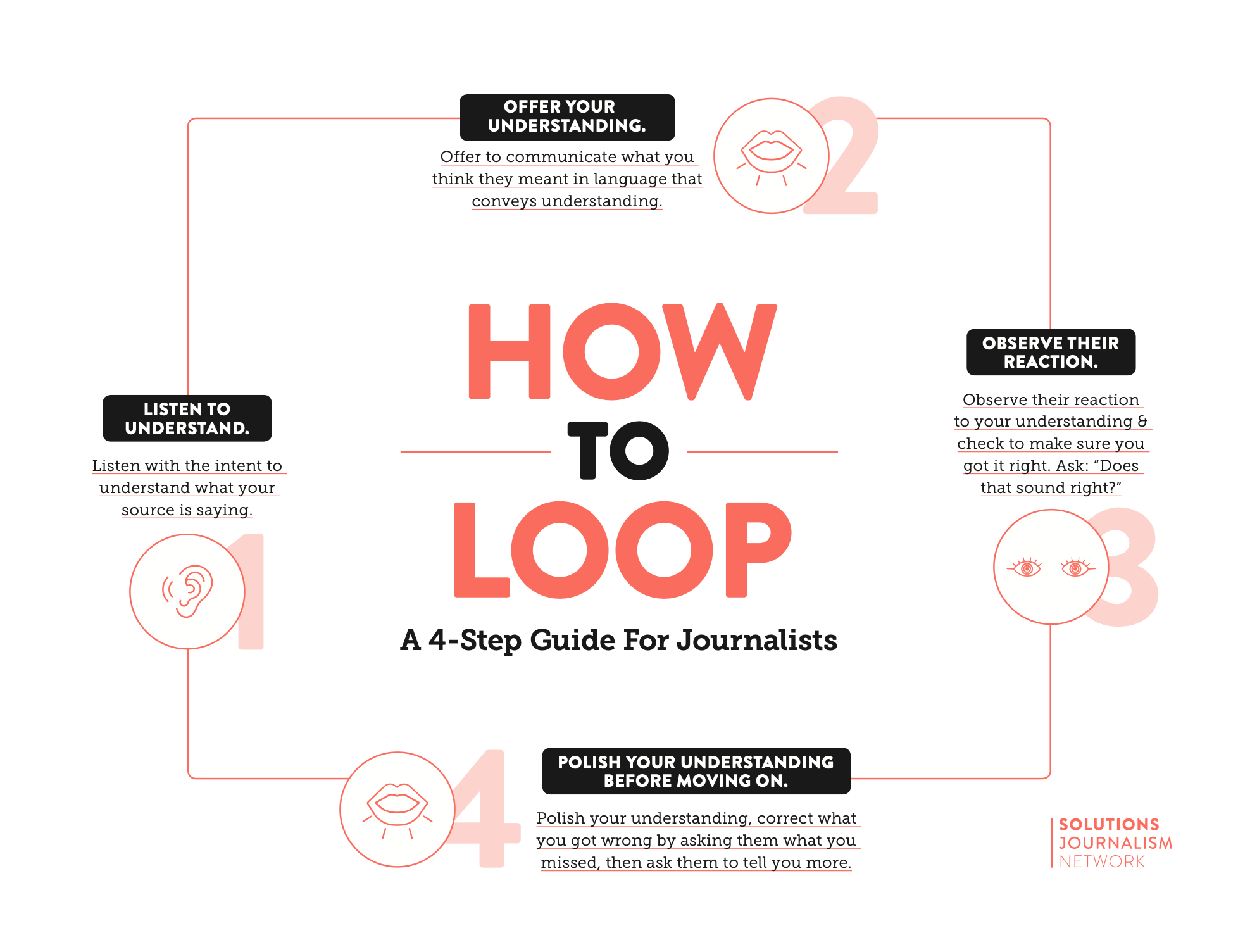Introduction
Listening is the essential ingredient of any interview. When covering contentious and divisive issues, it is critical that you listen in a way that challenges you to acknowledge your assumptions and biases and helps your sources feel heard and understood.
When we’re interviewing a source entrenched in a particular viewpoint, and we want to share with them perspectives that differ from their own, that source will need to feel heard first before they’ll be willing to listen to and consider opinions that counter their own.
You can do that, listen better, build trust with your source, and make them feel heard and understood through a technique called looping.
WHAT’S LOOPING?
Looping is a communication technique used by conflict mediators to build trust, help focus a conversation, and develop understanding. Looping generates clarity about the underlying issues behind any strong emotion. In addition, it’s a way for journalists to reflect their understanding to an interview subject. Looping should not be mistaken for agreement. Rather, it involves having a genuine desire to better understand what matters most to the person(s) being interviewed.

WHY SHOULD JOURNALISTS LOOP?
When journalists successfully loop, they’re able to connect with their interview subjects. This connection enables them to get better information and a willingness from the source to hear and respond to opposing viewpoints. By showing understanding and digging deeper, journalists can build trust, learn the motivations behind someone’s viewpoint, uncover the complex layers of an issue for that person, better define and clarify the problem, and fact-check.
WHEN YOU LOOP DURING AN INTERVIEW, YOU:
- GIVE YOUR SOURCE THE SPACE to reflect and share their experiences and perspectives.
- GET BETTER INFORMATION because your source, after being heard, may be more willing to share.
- SHOW UNDERSTANDING, not agreement.
- CHECK IN to make sure you clearly understand the person’s perspective before moving on.
